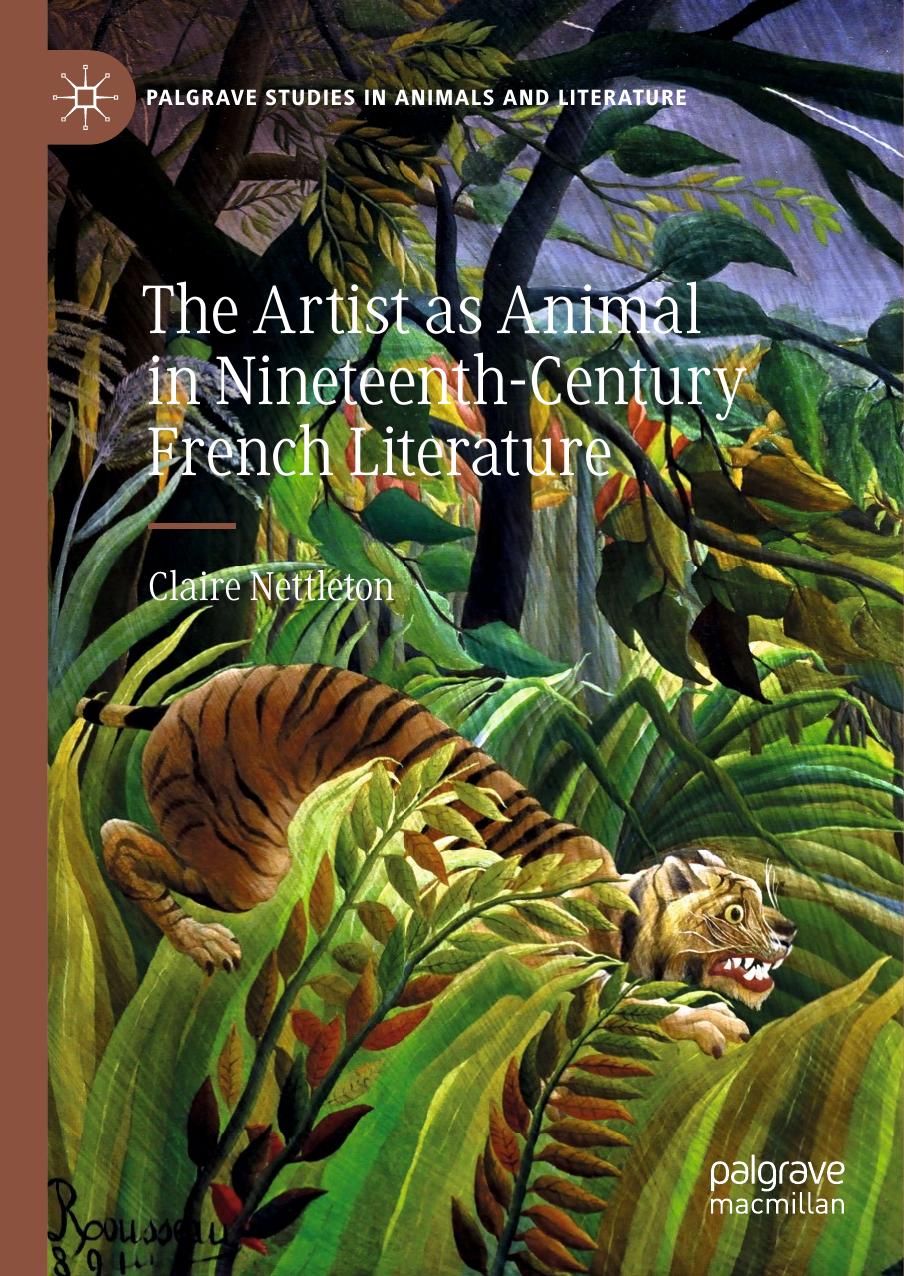The Artist as Animal in Nineteenth-Century French Literature by Claire Nettleton

Author:Claire Nettleton
Language: eng
Format: epub, pdf
ISBN: 9783030193454
Publisher: Springer International Publishing
The sea sparks the captive fish’s imagination and nostalgia, evoking an explosion of visual (“eyes,” “blue-green,” “the sky is red and the light’s all pink”), olfactory (“evil-smelling”) and tactile (“warm your tummy,” “wander hand in hand”) sensations, which cannot be experienced within the grimy bounds of the aquarium tank. Clippa’s vision of the sea mirrors the experience of the European urbanite that yearns for Shangri-la. Clippa’s dream of escaping to the Indian Ocean parallels the colonial fantasy of leaving Europe in search of faraway wonderland. Before the mid-nineteenth century, scientists did not exactly know what types of life existed in the deep sea beyond the naked eye (Gamwell 2002, 86). The first mechanical submarine, Le Plongeur, was launched in 1863 and was featured in the Exposition Universelle of 1867. Darwin’s discovery of 67 organic forms on the voyage of the HMS Beagle illustrated the value of the tiniest and simplest of creatures. Edward O. Wilson writes of Darwin, “No creature was too small to excite his interests” (In Darwin 2005, 18). After the publication of Darwin’s The Origin of Species , C. Wyville Thomson explored the ocean’s depths on the Challenger expedition from 1872 to 1876 and discovered thousands of new species of animals and plants. This expedition expanded the public’s knowledge of the world’s inhabitable regions by over 75 percent (Gamwell 2002, 82). Thomson’s The Report of the H.M.S. Challenger (1889) provided hundreds of full-page illustrations to Europeans who were able to view detailed sketches of the sea creatures. In fact, several species of the creatures mentioned in Laforgue’s poem were discovered during Thomson’s expedition on the Challenger. In addition to finding starfish and sponges that had “very much the appearance of the trunk of a tree” (Thomson 1889, 174), Thomson found plasma—what Laforgue claimed to be “the ideal”—throughout the bottom of the Atlantic. Thomson claimed that he found “everything in the ooze” due to the multitude of animals traveling along it (Thomson 1889, 117).
Laforgue’s attention to invertebrates, in particular, reverses the notion that only biologically and intellectually complex creatures merit scientific and poetic inquiry—thus devaluing the intricacy of the human body or any organism that lacks a backbone. Laforgue’s interest in sponges and starfish also reflects Lamarck’s multivolume work on invertebrates, whose study of the respiratory and circular systems of mollusks is still on display at the present-day Muséum national d’Histoire naturelle. Reports of the museum in 1851 even state that the sponge was the first animal that visitors would see in the museum (Henry 1851, 49). Lamarck scholar Léon Szyfman argues that the study of invertebrates alters metaphysical conceptions (Szyfman 1987, 21). In fact, even though we as land-dwelling mammals may see vertebrates as the most valuable, 95 percent of animal life on earth is comprised of invertebrates (Simon et al. 2016, 375).
According to historian Lynn Gamwell, the public became fascinated by the “mysterious creatures of the deep. Aquariums were established and Verne took readers on an underwater voyage to meet captain Nemo (Latin for ‘nobody’), an early modern anti-hero, the wanderer without a homeland” (Gamwell 2002, 86, Fig.
Download
The Artist as Animal in Nineteenth-Century French Literature by Claire Nettleton.pdf
This site does not store any files on its server. We only index and link to content provided by other sites. Please contact the content providers to delete copyright contents if any and email us, we'll remove relevant links or contents immediately.
| Ancient & Classical | Arthurian Romance |
| Beat Generation | Feminist |
| Gothic & Romantic | LGBT |
| Medieval | Modern |
| Modernism | Postmodernism |
| Renaissance | Shakespeare |
| Surrealism | Victorian |
4 3 2 1: A Novel by Paul Auster(12329)
The handmaid's tale by Margaret Atwood(7705)
Giovanni's Room by James Baldwin(7250)
Asking the Right Questions: A Guide to Critical Thinking by M. Neil Browne & Stuart M. Keeley(5708)
Big Magic: Creative Living Beyond Fear by Elizabeth Gilbert(5676)
Ego Is the Enemy by Ryan Holiday(5347)
The Body: A Guide for Occupants by Bill Bryson(5027)
On Writing A Memoir of the Craft by Stephen King(4892)
Ken Follett - World without end by Ken Follett(4682)
Adulting by Kelly Williams Brown(4531)
Bluets by Maggie Nelson(4510)
Eat That Frog! by Brian Tracy(4483)
Guilty Pleasures by Laurell K Hamilton(4392)
The Poetry of Pablo Neruda by Pablo Neruda(4063)
Alive: The Story of the Andes Survivors by Piers Paul Read(3996)
White Noise - A Novel by Don DeLillo(3980)
Fingerprints of the Gods by Graham Hancock(3964)
The Book of Joy by Dalai Lama(3944)
The Bookshop by Penelope Fitzgerald(3810)
